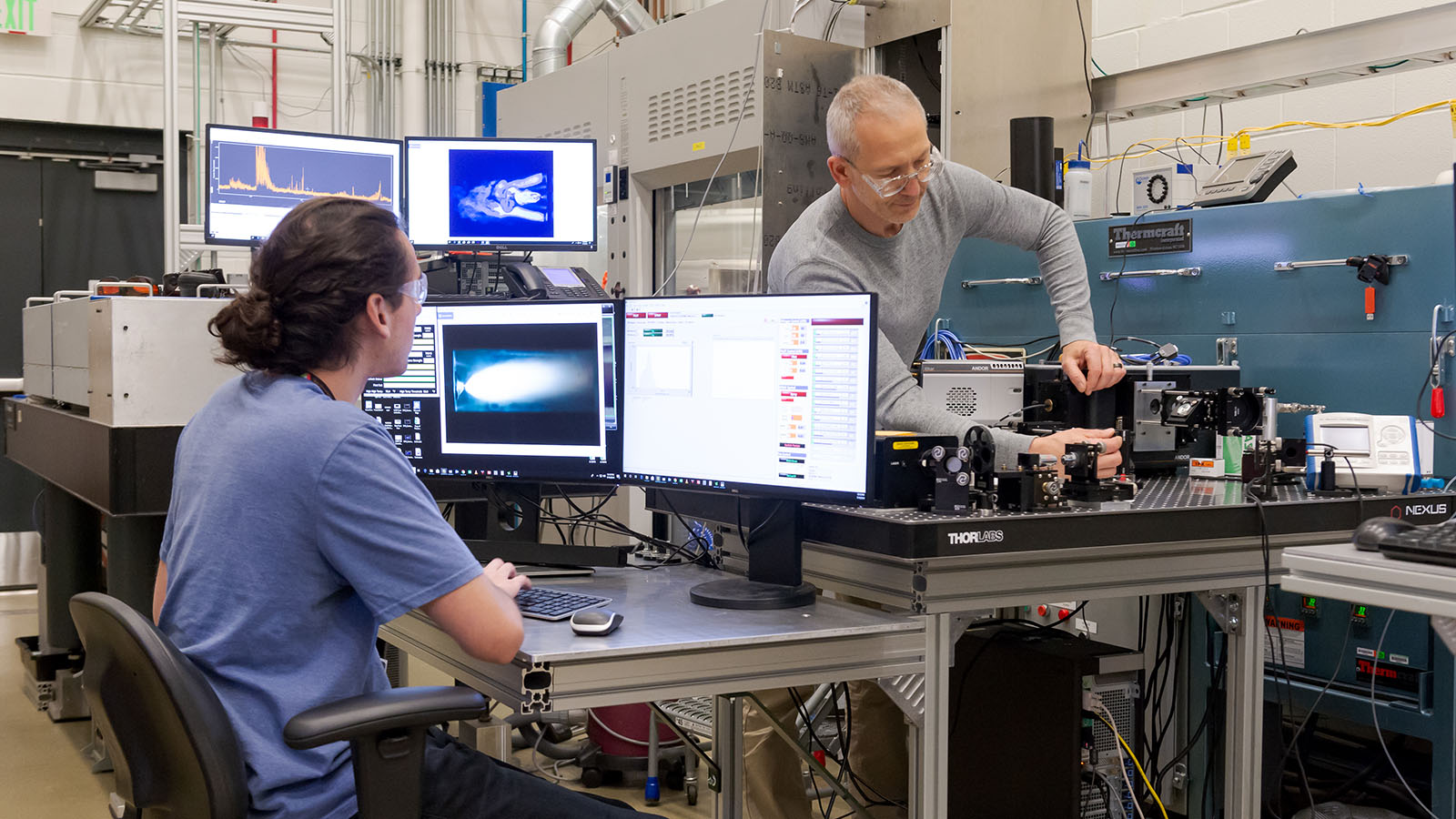In July 2020, a team of researchers discovered how to create better-performing materials by using artificial intelligence (AI) to optimize a complex process called flame spray pyrolysis. The team, all from Argonne’s Applied Materials Division, consisted of Noah Paulson, Computational Materials Scientist; Joe Libera, Principal Materials Scientist; and Marius Stan, Intelligent Materials Lead.
Flame spray pyrolysis is a technology employed to manufacture nanomaterials at high volumes. These nanomaterials are then used to make a wide range of industrial materials. When asked to explain the process, Stan put it simply: “It’s where scientists put chemicals in a flame and wait for a miracle — for particles to appear at the end of the process, particles that have important properties for a variety of applications.”
Nanomaterials are really, really small materials that are between 1-100 nanometers (nm). To put it into perspective, the nanoscale is 1,000 times smaller than the width of a single strand of human hair. At this very small size, nanomaterials have different chemical and physical properties that make them an ideal material choice.
According to Paulson, “We found that we could use machine learning to control the inputs in the flame spray pyrolysis setup — and it’s complex, there are a lot of different inputs — and obtain desirable outcomes.”
Machine learning is an application of AI that involves developing sets of rules known as algorithms in order to “teach” or “train” the computer. The purpose of machine learning is for the computer to learn from past data to continuously improve without human input.
Paulson added that the study’s findings could result in a lot of improved materials — like battery electrodes, for example. “If you have a car and you want to double the range of that car on a single charge, you need better battery materials. That’s what’s limiting us in terms of these applications.”
The role of artificial intelligence in the research was particularly noteworthy. Stan, who has devoted a large part of his career to studying the relationship between humans and machines, said that the analysis for this project was so complex that it would be almost impossible for a human being to do it.
“This is a demonstration that we can create an algorithm and software that can control a process as well, if not better, than a human can. This involved so many parameters that artificial intelligence was necessary to augment our brain in processing this information,” Stan said. “We could not have extracted these findings from the data by observation only, because there were so many dimensions.”
Paulson agreed. “The core of this technology is machine learning that allows us to optimize these processing conditions without human input,” he said. “We’re basically able to zero in on the particle size distribution (we want) in a single day of experiments, versus what could be many weeks.”
Looking ahead, Paulson and Stan pointed to further possible research. At the Manufacturing and Engineering Research Facility, the research team is looking to connect with industrial partners to study how the project software can better control the combustion and chemical processes that are part of flame spray pyrolysis. At the same time, the team hopes to use Argonne’s upcoming high-performance supercomputer Aurora to help with the needed intense computations.
Paulson believes these kinds of efforts will ultimately result in the ability to produce better materials, which is a precursor to progress on many different technological fronts.
“Materials are the real bottleneck,” he explained. “If we can find a way to translate the successes that we see in the lab to materials that can be manufactured at reasonable costs, then we can enable those technologies that the world really needs.”
This research effort was supported by Argonne’s Laboratory Directed Research and Development program. The researchers used Argonne’s Manufacturing and Engineering Research Facility to help obtain results.
Original article published on November 18, 2020
